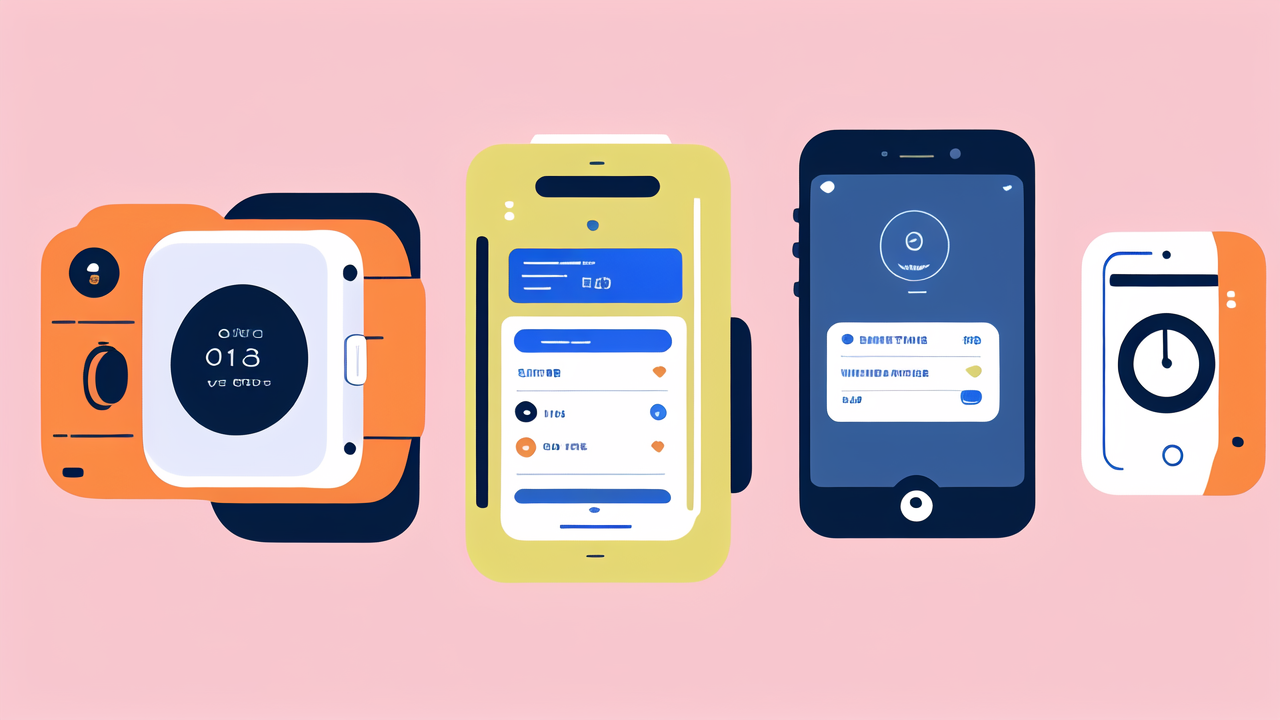Understanding the Evolution of Fitness Watches in the United States
The Early Days of Fitness Wearables: History and Milestones
Fitness watches have come a long way since their inception. In the early 2000s, basic step counters were the norm. These devices were simple, counting steps and estimating calories burned. As technology advanced, so did fitness wearables. The first major milestone came with the introduction of GPS tracking. This feature allowed runners and cyclists to map their routes and track distance accurately. Heart rate monitors soon followed, adding a new layer of health data. By the mid-2010s, smartwatches emerged, combining fitness tracking with smartphone features. This marked a turning point in the industry, making fitness watches more appealing to a broader audience.

Technological Advancements in Fitness Watches
The evolution of fitness watches has been rapid and impressive. Early models relied on simple accelerometers to track movement. Now, these devices boast a range of sensors. Modern fitness watches can monitor heart rate, blood oxygen levels, and even detect falls. Battery life has improved significantly, with some models lasting weeks on a single charge. Display technology has also advanced, with high-resolution color screens becoming standard. Water resistance has improved, allowing swimmers to track their workouts. Connectivity options have expanded, with Bluetooth and WiFi becoming common features. These advancements have made fitness watches more versatile and useful in daily life.
The Integration of AI and Machine Learning in Modern Fitness Watches
Artificial Intelligence (AI) and Machine Learning (ML) have revolutionized fitness watches. These technologies allow devices to learn from user data and provide personalized insights. AI algorithms can analyze sleep patterns and suggest improvements for better rest. Machine learning models can predict stress levels based on heart rate variability. Some watches can even detect irregular heart rhythms, potentially alerting users to health issues. AI-powered virtual coaches provide real-time feedback during workouts. These smart features help users make sense of their data and take actionable steps towards better health. As AI and ML continue to advance, fitness watches will become even more intelligent and helpful.
The Impact of Fitness Watches on Consumer Behavior
Personal Accountability and the Rise of Fitness Culture
Fitness watches have played a significant role in promoting personal accountability. These devices provide constant reminders of our activity levels and health metrics. Users can set goals and track their progress over time. This visibility has led to increased awareness of daily habits. Many people now strive to meet step goals or close their activity rings. Fitness watches have also fostered a sense of community. Users can share their achievements and compete with friends. This social aspect has contributed to the rise of fitness culture. More people are prioritizing their health and seeking ways to improve their wellness. Fitness watches have made it easier for individuals to take control of their health journey.

How Fitness Watches Influence Exercise Routines and Lifestyle
Fitness watches have transformed how people approach exercise and daily routines. These devices offer guided workouts and training plans tailored to individual goals. Users can track various activities, from running to yoga to weightlifting. This versatility encourages people to try new forms of exercise. Many watches now include features like stress tracking and mindfulness reminders. These additions promote a holistic approach to health, beyond just physical fitness. Sleep tracking has made people more aware of their rest patterns. Some users adjust their schedules to improve sleep quality. The constant presence of health data on one's wrist can motivate healthier choices throughout the day.
The Role of Data and Analytics in Fitness Regimens
Data and analytics have become central to modern fitness regimens. Fitness watches collect vast amounts of data on users' activities and health metrics. This information allows for detailed analysis of workout performance and trends. Users can see how their fitness levels change over time. Many watches provide recovery recommendations based on workout intensity and sleep quality. Advanced analytics can help users optimize their training schedules. Some platforms use this data to create personalized workout plans. The ability to sync data with other apps and devices creates a comprehensive health profile. This wealth of information empowers users to make informed decisions about their fitness routines.
The Future of Fitness Watches in the Wearable Tech Industry
Emerging Trends in Wearable Fitness Technology
The future of fitness watches looks promising, with several exciting trends on the horizon. One major trend is the integration of more advanced health monitoring features. We may soon see watches that can measure blood glucose levels non-invasively. Emotional health tracking is another area of development, with devices aiming to detect mood changes. Enhanced battery technology could lead to watches that never need charging. Some companies are exploring flexible displays that wrap around the wrist. Augmented reality features might allow for immersive workout experiences. 3D body scanning could provide more accurate fitness assessments. As technology advances, fitness watches will likely become even more integral to our health management.

The Intersection of Wearables and Health Care: Opportunities and Challenges
The integration of fitness watches with healthcare systems presents both opportunities and challenges. On the positive side, these devices could revolutionize preventive care. Continuous health monitoring could detect issues before they become serious. Doctors could use data from fitness watches to make more informed diagnoses. Patients with chronic conditions could benefit from real-time tracking and alerts. However, there are challenges to overcome. Data privacy and security are major concerns. There's also the question of data accuracy and reliability for medical use. Healthcare systems will need to adapt to handle the influx of data from wearables. Despite these challenges, the potential for improving patient care is significant.
Predicting the Next Big Thing: What's Beyond the Fitness Watch?
As we look to the future, it's exciting to imagine what might come after the fitness watch. One possibility is the development of smart clothing with built-in sensors. Implantable devices could provide even more accurate health data. Brain-computer interfaces might allow for direct control of devices with thoughts. Nano-sensors could track health at a cellular level. Virtual reality could create immersive fitness experiences beyond what's possible now. Whatever form it takes, the next generation of wearables will likely focus on seamless integration with our lives. The goal will be to provide valuable health insights without requiring constant attention from the user.




Leave a comment
This site is protected by hCaptcha and the hCaptcha Privacy Policy and Terms of Service apply.